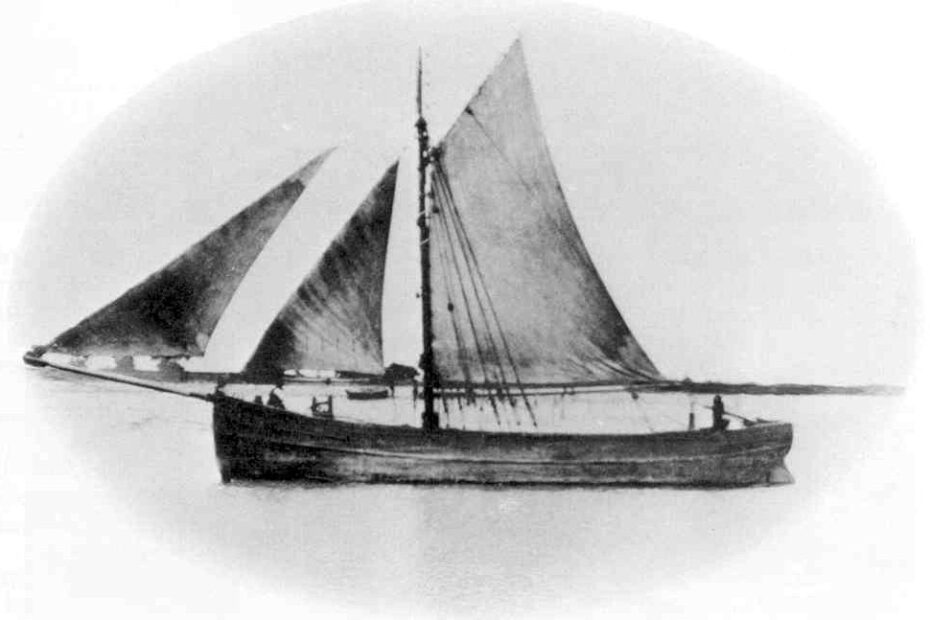This is an extract from a fascinating memoir of the days of the sailing coasters in and around the Severn Estuary. Edmund Eglinton, born in 1902, was 13 when he began to sail on the trows and ketches of the Bristol Channel in 1915. His memory of those sailing voyages is immensely detailed and fascinating for anyone who has sailed in this area. The problem of shifting sand and mud-banks, the ferocious tides and unpredictable weather are all here – when sailing was about carrying goods from port to port without the aid of engine power. It includes stories of loading and unloading stone from local quarries to build sea walls, coal for the railways, bricks and grain. The life was hard but nontheless there was an immense pride in the skill of these seamen. The following extract describes the entry to Lydney harbour, still a challenge for yachtsmen and women today.
That morning as we were early, about two miles below Lydney over the Lydney Sands, we had to put the vessel’s head down against the tide, for a sailing vessel must arrive off Lydney pier if possible at slack tide, otherwise she may be swept so far above the pier that, by the time she is able to return on the ebb the tide will be is too strong to attempt an entrance even if the gates were open. At spring tides about 15 minutes before high water the tide starts to ease, and by the same amount of time – or less – after high water the ebb is running at maximum speed.
Now although that morning (my first ever sight of Lydney pier) we headed the ‘Jane’ downstream, and had a nice steady easterly wind for so doing, we were still travelling stern first towards the pier, the tide being stronger than the wind. Capt Smart kept watching the time and calculating the distance yet to travel, judging our speed astern by the changing position of landmarks ashore, talking meanwhile of sundry subjects with no sign of anxiety – master of a situation he had been in many times before. In later years, seeing men – even with auxiliary engines – pale and anxious in similar situations off Lydney pier I would think of Capt Smart and marvel at his ability. We were getting nearer the pier now; soon we saw vessels leaving the locks, but being swept up be the tide immediately they left the shelter of the pier. But the tide was easing. ‘We’ll jibe her over now’, said the Captain. Then ‘Haul the sheets, in we’ll get on up’. So on the starboard tack we edged towards the Lydney shore still being swept up river with the last of the flood. Soon came the call ‘Take the topsail down’, then ‘Haul down the flying jib’ followed by ‘Lower the anchor down to the forefoot, quickly now’. By the time I had executed those orders we were quite near the pier, and the skipper was keeping the ‘Jane’s head downstream for the last few minutes of the flood. Then a raucous shout from the pierhead, ‘Come on ahead ‘Jane’ there’s no tide here now’. Meantime I had by now got a heavy manila warp ready on the starboard quarter with a bowline ready to drop over a bollard to act as a stern rope to bring the vessel up.
Edmund Eglinton, ‘Last of the Severn Sailing Coasters’
